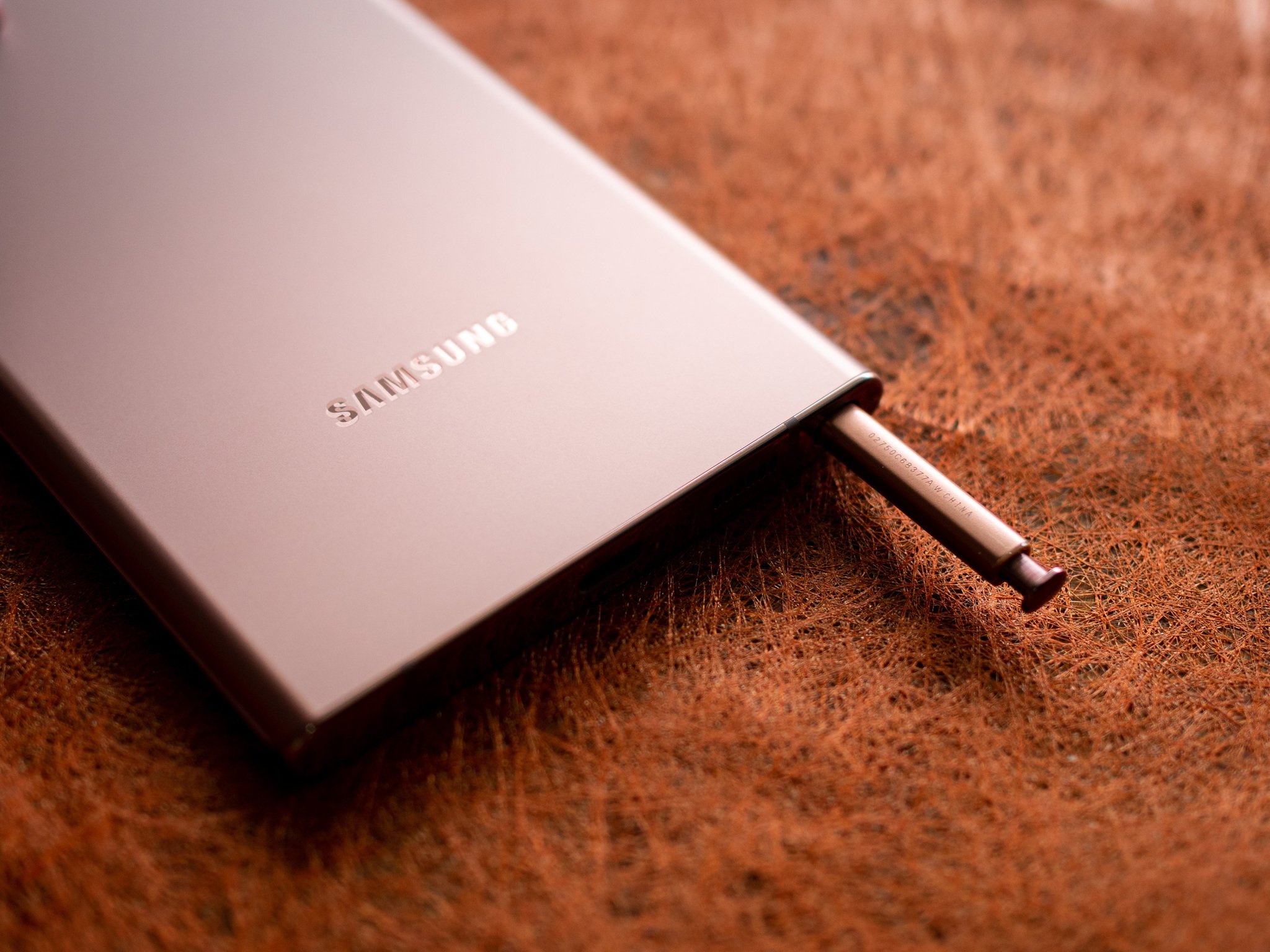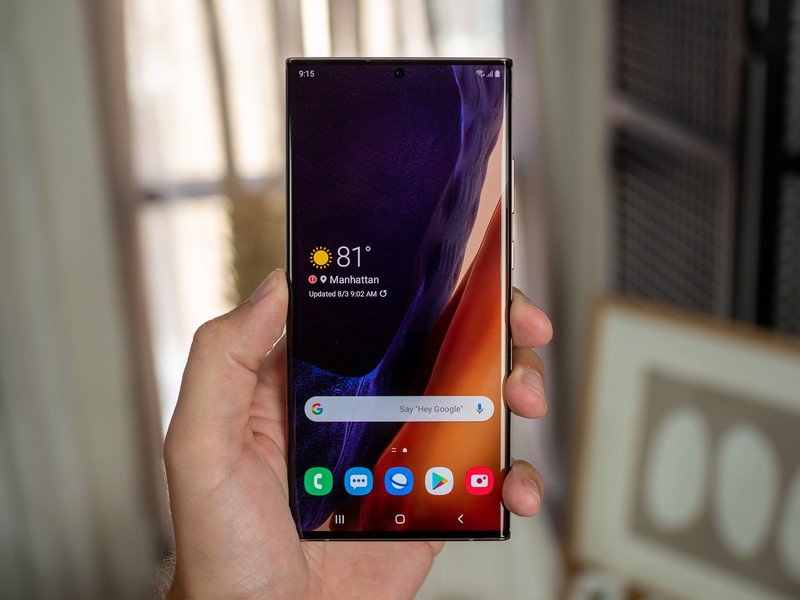6 things Samsung needs to do better in 2021

If there's one company that's regularly the most interesting and important in the Android space, it's Samsung. Between bleeding-edge foldables and maintaining its dominance as the largest smartphone company on the planet, there's always reason to closely monitor what Samsung is doing.
2020 proved to be a pretty big and successful year for Samsung. It released excellent top-tier flagships with the Galaxy S20 and Note 20 series, pushed further into the foldable market with the Galaxy Z Flip and Z Fold 2, and took the value flagship world by storm with the unexpected Galaxy S20 FE. Add all of that together with fantastic accessories and a new commitment to three years of OS updates for many of its devices, and 2020 had a lot of wins for Samsung.
That's not to say that Samsung had a perfect year, though. There are still plenty of areas in which the company can improve, and as we head into 2021, these are the biggest things we want to see Samsung do better at.
1. More durable glass for folding phones

Over the past few months, we've heard talk that Samsung is going to kill off the Galaxy Note family in 2021. This is a rumor that pops up basically every year, but it really does look like the hammer is finally going to come down this time.
In place of the Note, Samsung is instead going to offer S Pen support across its other devices — including the Galaxy S21 Ultra and Galaxy Z Fold 3. The idea of having a Z Fold that works with the S Pen is incredibly exciting, but in order for that to be a good experience, Samsung needs to find a way to improve the durability and strength of its Ultra Thin Glass (UTG).
The UTG used on the Z Fold 2 is a considerable improvement over the plastic screen of the original Galaxy Fold, but it's still a far cry from the durability you get on a traditional smartphone display. While technically glass, it's very easy to scratch and dent the Z Fold 2's display if you aren't being careful with it. Samsung throws in a factory-installed screen protector to try and mitigate that from happening, but you then end up with a much worse-feeling touch experience.
If Samsung expects us to draw and navigate on the Z Fold 3 using the hard point of an S Pen, it needs to find a way to further improve the strength of its UTG. It's difficult to say just how much can be improved without throwing physics out the window, but we have to hope that progress is made on this front.
Get the latest news from Android Central, your trusted companion in the world of Android
2. Offer a true Pixel 4a competitor

One of Samsung's biggest wins of 2020 was the Galaxy S20 FE. Being able to get 90% of the Galaxy S20 experience for hundreds less turned out to be a really enticing offer, but with a retail price of $700, the S20 FE isn't exactly the low-cost Android phone that a lot of people are looking for. That market was dominated by the likes of the Pixel 4a and Moto G Power in 2020, and in 2021, Samsung should try and claim some of that niche for itself.
Sure, we had releases like the Galaxy A51 and A71 5G, but neither one captured the same magic that Google pulled off with the 4a. Whether it uses A or S branding, we'd love to see a $300 - $400 Galaxy phone that's compact, has a great camera system, and reliable specs across the board. Google's done it for two years between the Pixel 3a and 4a, and it's about time Samsung try and do the same.
Samsung can keep on keeping on with its larger smartphone offerings like it's been doing, but having at least one genuinely small and affordable option to choose from would be great to see.
3. Bigger focus on sustainability

If you've followed product releases from Apple and Google over the last couple of years, you've probably noticed their big push for greater sustainability. Many of the components in the iPhone 12 are made out of recycled rare earth elements, Google's Nest Audio smart speaker is made from 100% recycled plastic bottles, and both companies are making tangible efforts in all aspects of their business that are centered around protecting the planet as much as possible.
Samsung has made some efforts around having its products be more sustainable, but it's nowhere near the same level that we've seen from its competitors. Heading into 2021 where the state of our planet's well-being is more important than ever before, that lackadaisical approach cannot continue.
Samsung needs to be seen as an example of how to do sustainability right, not the outlier — especially given its dominance in the smartphone landscape. There's so much more the company can be doing in these regards, and we really hope Samsung takes action on this front in the coming year.
4. Ditch curved displays once and for all

Samsung had a weird relationship with curved displays in 2020. The Galaxy S20, S20+, and S20 Ultra all technically had curved displays, but the curvature was so subtle that they might as well have been flat. The regular Note 20 and S20 FE both shipped with totally flat screens, but the Note 20 Ultra decided to bring back those drastic curves.
Those curved edges of the Note 20 Ultra ended up being one of our least favorite things about the phone, putting an annoying damper on an otherwise fantastic device. To avoid something like that from happening again, Samsung needs to fully commit to flat screens on all of its devices.
Things are looking hopeful so far, with the current Galaxy S21 leaks hinting at flat edges for the S21, S21+, and S21 Ultra. We can also assume that the Galaxy Z Fold 3 and Z Flip 2 will stick with flat displays as their predecessors have, so we could very much be headed into a year with no curved screens on any major Samsung phone. Yes, yes, please.
5. A quality Chromebook that isn't $1,000

Way back in 2018, Samsung released something called the Chromebook Plus V2. It was a successor to the original Chromebook Plus from 2017, and at the time, it was one of the very best Chromebooks you could buy. With a premium build quality, great display, and fast performance for just $499, it was an incredible value.
Since then, however, we've yet to see a proper sequel. Samsung showed off its fancy Galaxy Chromebook at the beginning of 2020, but with a starting price tag of $1000, it was far from the value-focused Chromebook Plus we still hold near and dear to our hearts. 2021 is the year for Samsung to finally fill that void.
Given the big push this year of everyone working and learning from home, Chromebooks got their chance to shine in the spotlight. People saw them as affordable alternatives to Windows laptops and MacBooks, bought them up in droves, and we're still dealing with stock shortages as a result. While that hunger for Chromebooks may die down a bit come 2021, this is the time for Samsung to get back out there with a sleek, powerful, and value-focused Chromebook offering that can appeal to everyone.
6. Three years of updates for more phones

When we think of companies that offer fast and reliable Android updates, Samsung hasn't typically been one of the first brands that comes to mind. That's something the company's worked to improve over the years, with its biggest push yet happening this past August. Alongside its Note 20 unveiling, Samsung made a promise to deliver three years of major Android updates for many of its smartphones and tablets.
The current list of phones backed by this guarantee is rather lengthy, including things like the Galaxy S10 and S20 series, the Note 10 and Note 20 lineups, the Galaxy A51, Galaxy A71, and more. Noticeably absent from this list, however, are many of Samsung's lower-cost phones. That three-year update promise doesn't apply to any of the Galaxy M or Galaxy F phones (which there are a lot of in other markets), the A21s, A31, and others.
Samsung taking software updates seriously was great to see this year, but as it currently stands, you need to buy a mid or high-tier smartphone if you want to benefit from that. If Samsung wants to do right by its customers that rely on its less expensive handsets, that three-year guarantee needs to extend to even the cheapest of Galaxy phones.
What do you think?
Now, we want to pass the question on to you — how do you want to see Samsung improve in 2021? Whether it be a change to the Galaxy S21, something with the Galaxy Watch, or anything else in between, drop a comment below and let us know!

Joe Maring was a Senior Editor for Android Central between 2017 and 2021. You can reach him on Twitter at @JoeMaring1.
